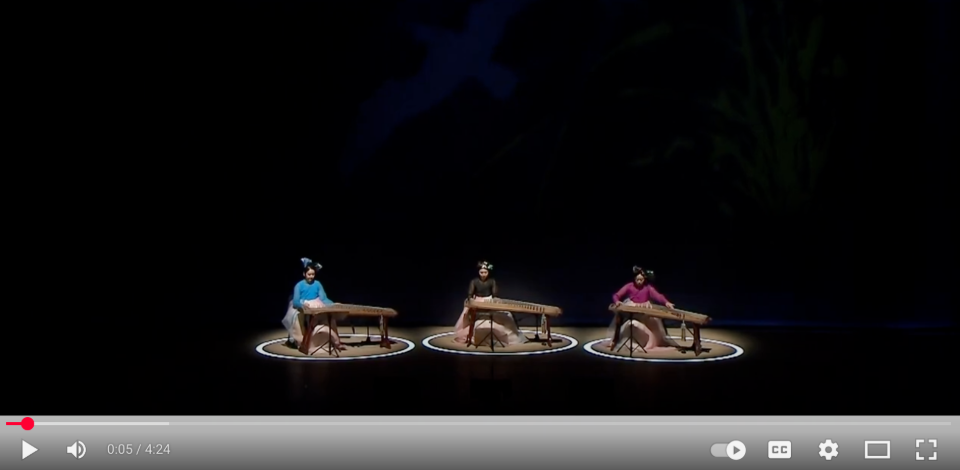Watch this performance by Gimhae City Gayageum Orchestra.
The following activities and questions are designed to help your students use their noticing skills to move through the poem and develop their thinking skills so they understand its meaning with confidence, using what they’ve noticed as evidence for their interpretations. Read more about the framework upon which these activities are based.
-
Warm-up: (free-write) (Teachers, before class, choose an image of an instrument from this website to project.) Look closely at the image of the instrument. What stands out to you? Why? What questions do you have?
-
Before Reading the Poem: Watch this musical performance by Gimhae City Gayageum Orchestra. What stands out to you about this performance? Why?
-
Reading the Poem: Silently read the poem “While Playing the Harp” by Han Yong-un, translated from the Korean by Younghill Kang. What do you notice about the poem? Note any words or phrases that stand out to you or any questions you might have.
-
Listening to the Poem: Enlist two volunteers and listen as the poem is read aloud twice. Write down any additional words and phrases that stand out to you.
-
Small Group Discussion: Share what you noticed about the poem with a small group. Based on the details you just shared with your small group, how does the poem connect to the resources from the beginning of class? How does the title inform the poem? What might another title for this poem be? Why?
-
Whole Class Discussion: What themes does this poem reveal? What imagery stands out to you in this poem? Why?
-
Extension for Grades 7-8: What things or people do you turn to in times of stress or turmoil? Try writing a poem about one of these, and if possible, use the title, “While Playing the Harp” as inspiration.
-
Extension for Grades 9-12: Celebrate poetry and translation by choosing a poet to research, read, and enjoy. If you can, translate the original poem into your own language. Share your translation with the class.
“The geomungo (also spelled komungo or kŏmun’go) or hyeongeum (literally ‘black zither,’ also spelled hyongum or hyŏn’gŭm) is a traditional Korean stringed musical instrument of the zither family with both bridges and frets. Scholars believe that the name refers to goguryeo and translates to ‘goguryeo zither’ or that it refers to the color and translates to ‘black crane zither.’” Read more about the geomungo.
Lyric poetry: a non-narrative poem, often with songlike qualities, that expresses the speaker’s personal emotions and feelings.

